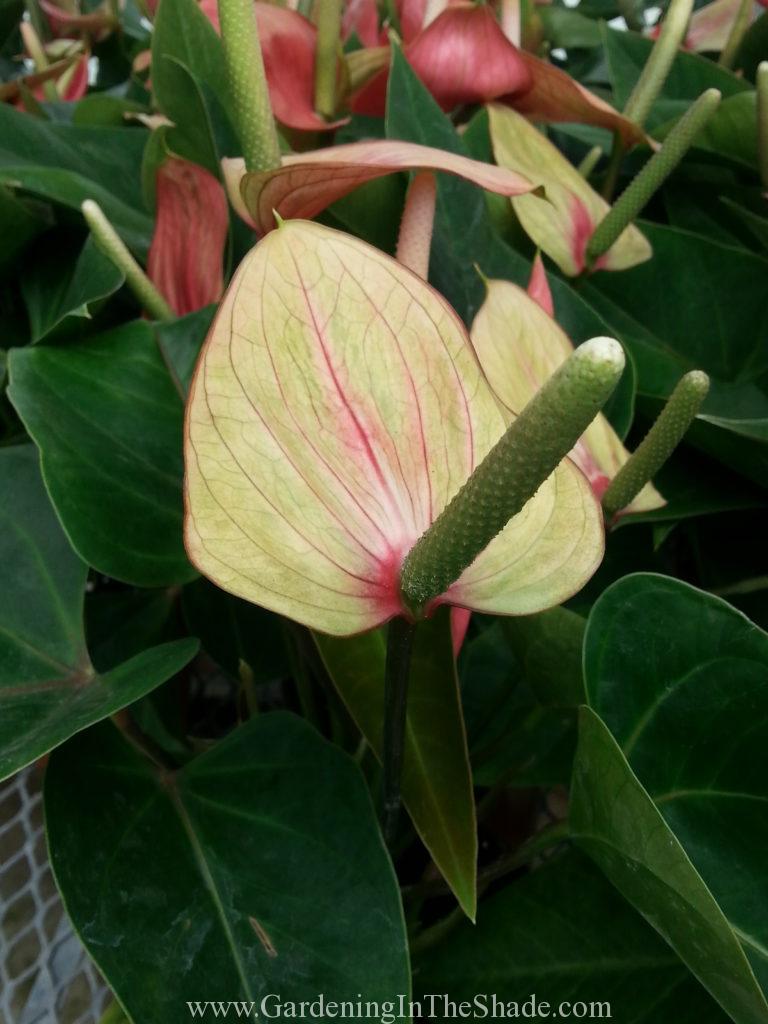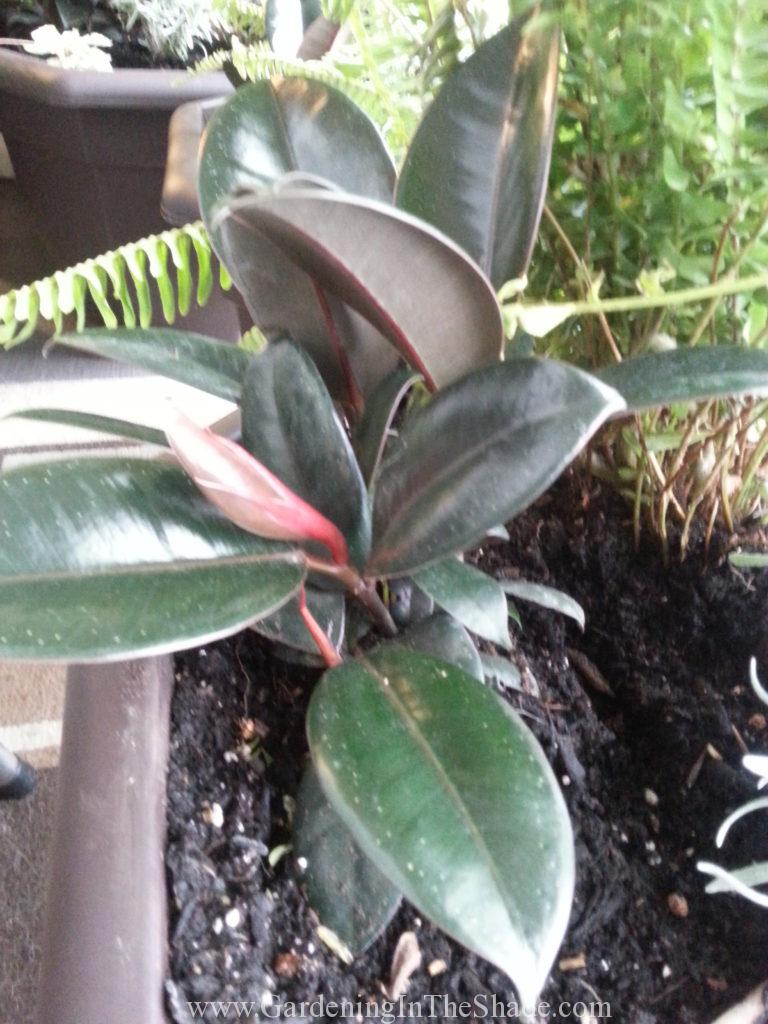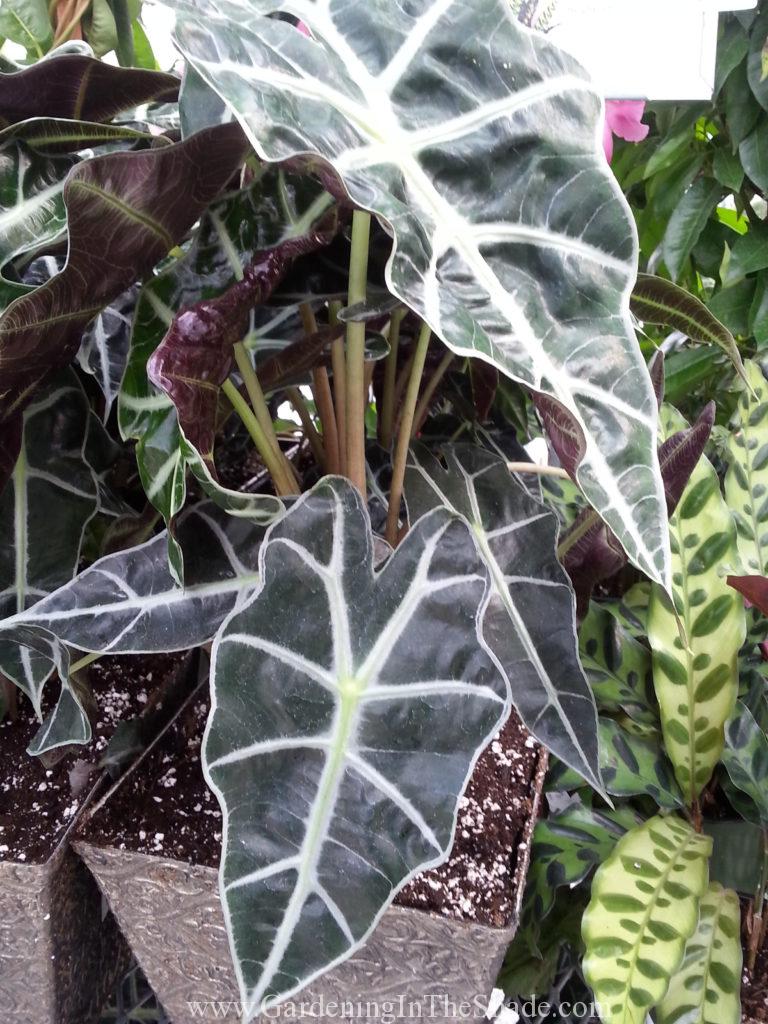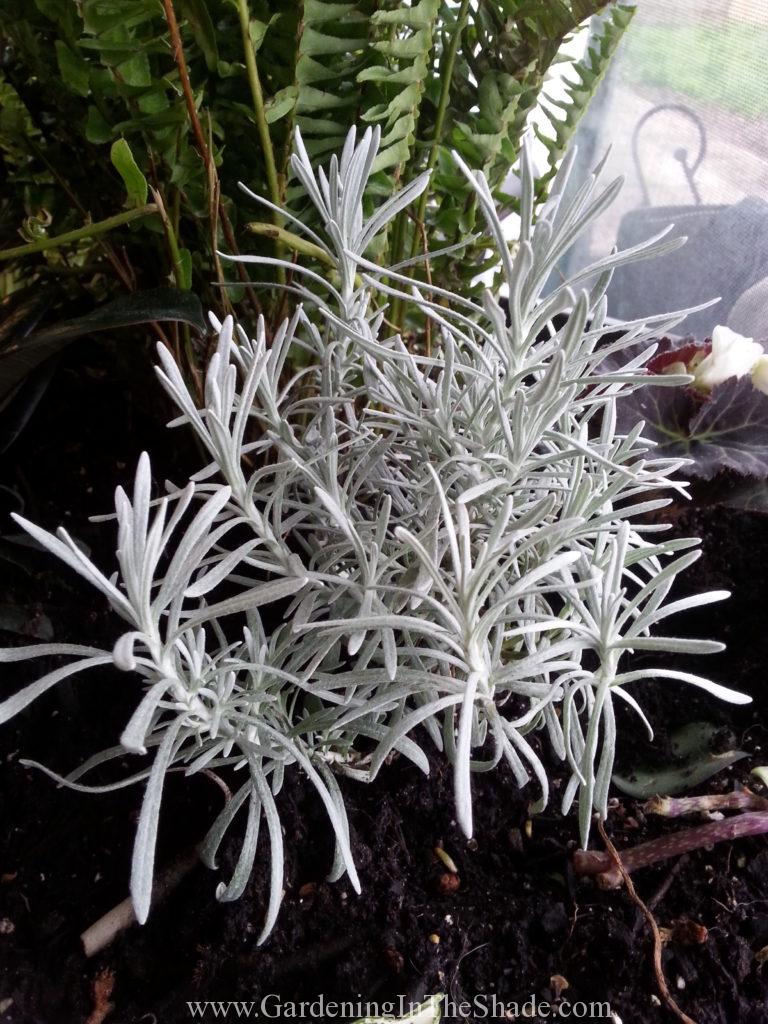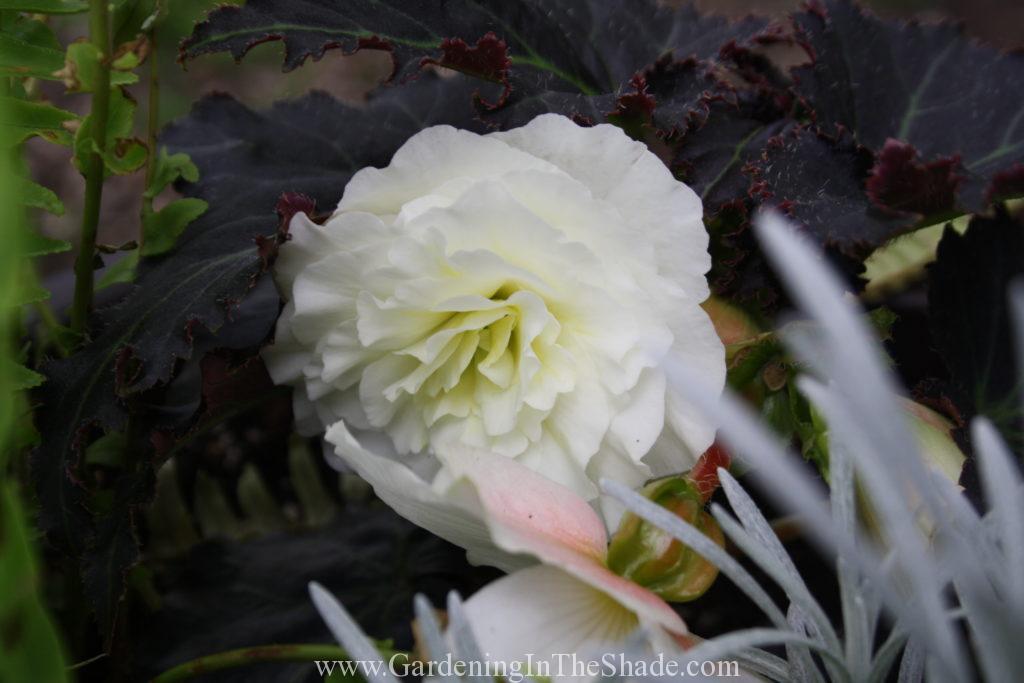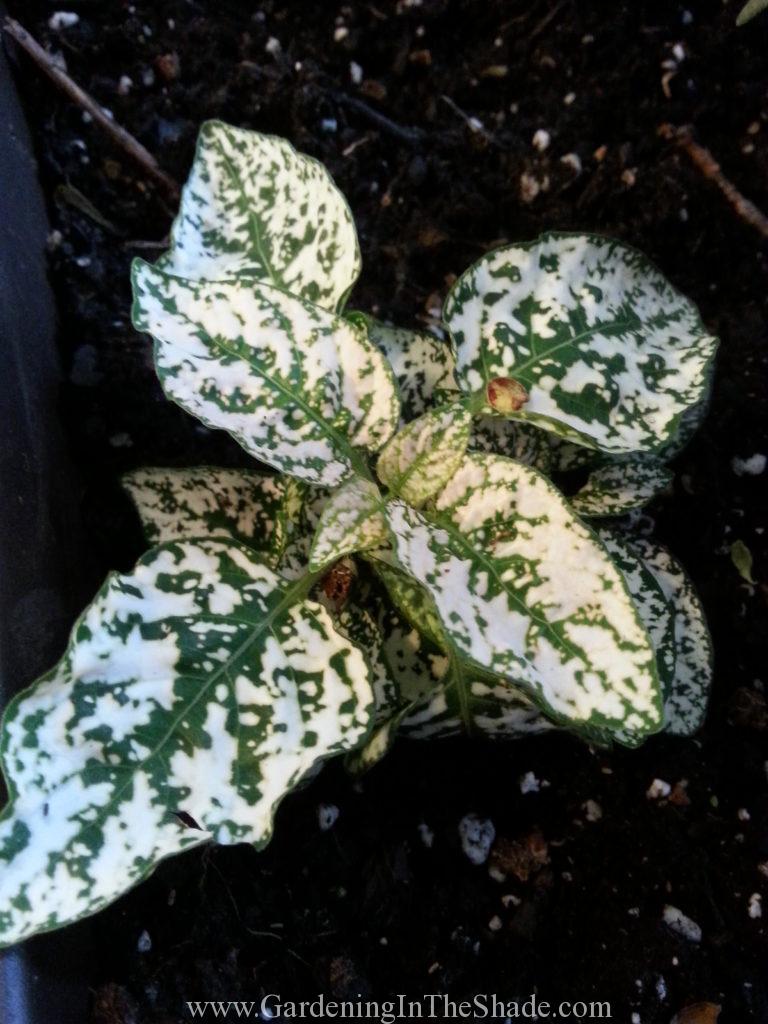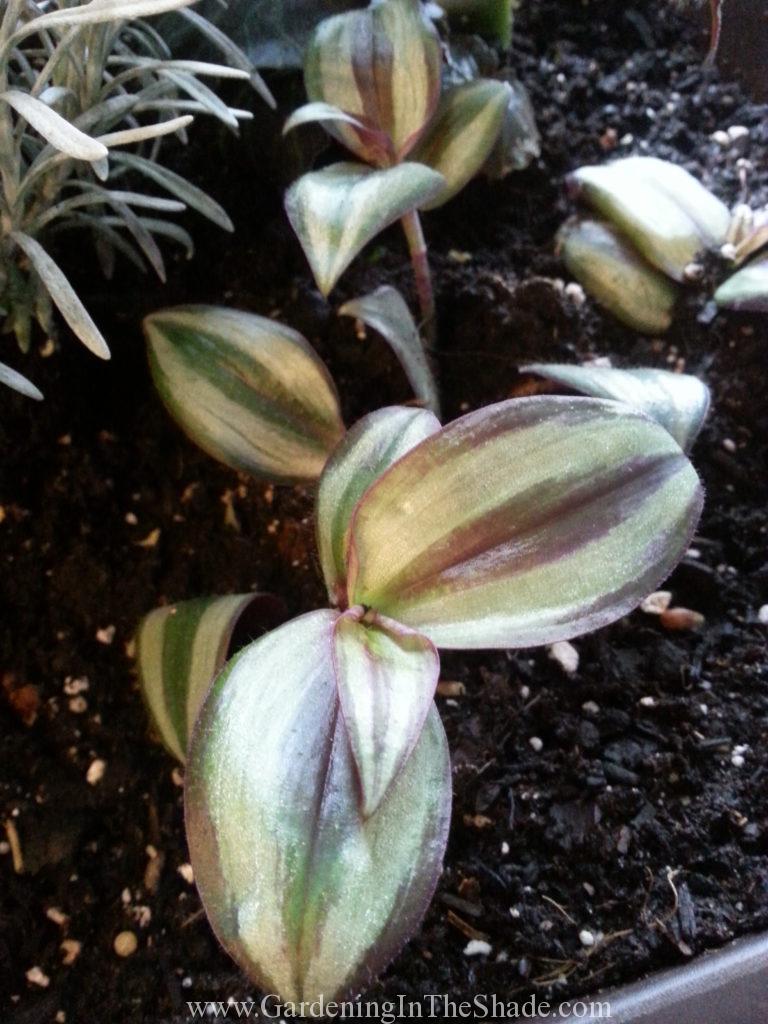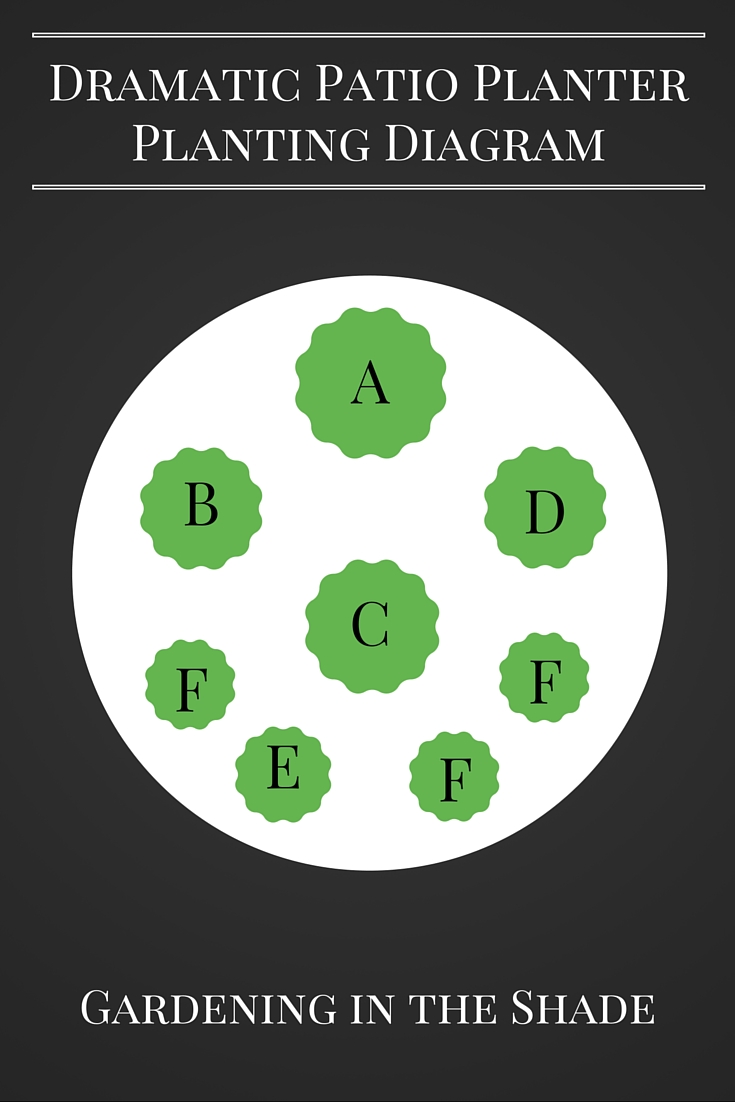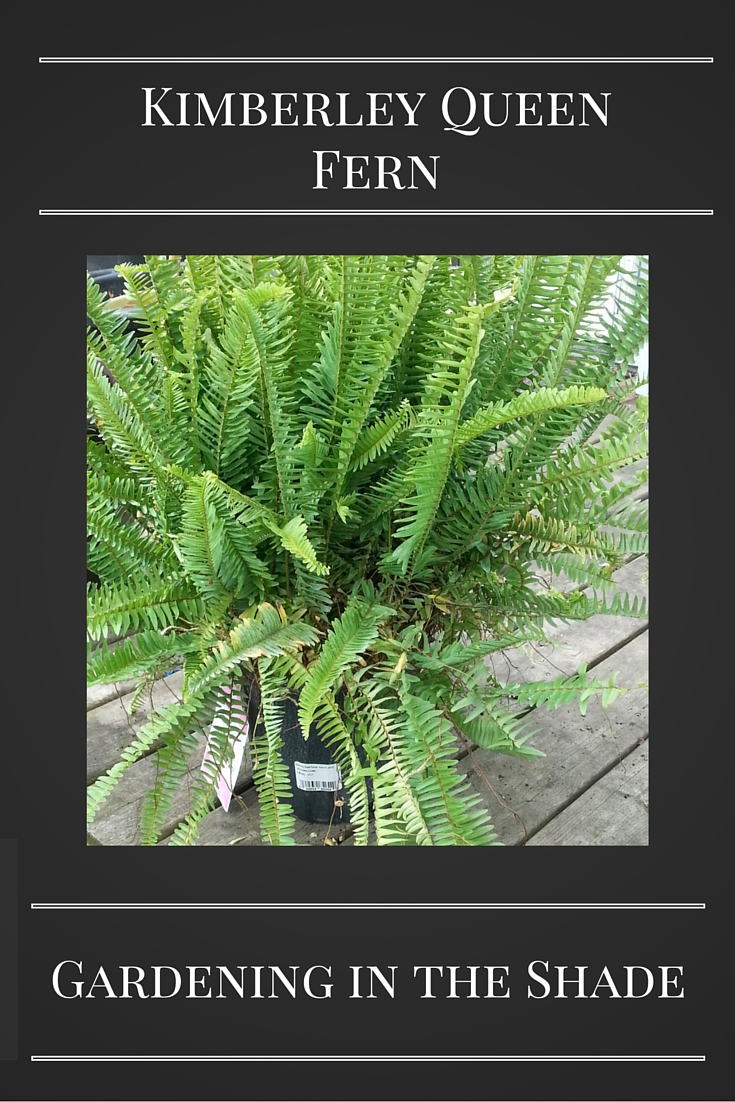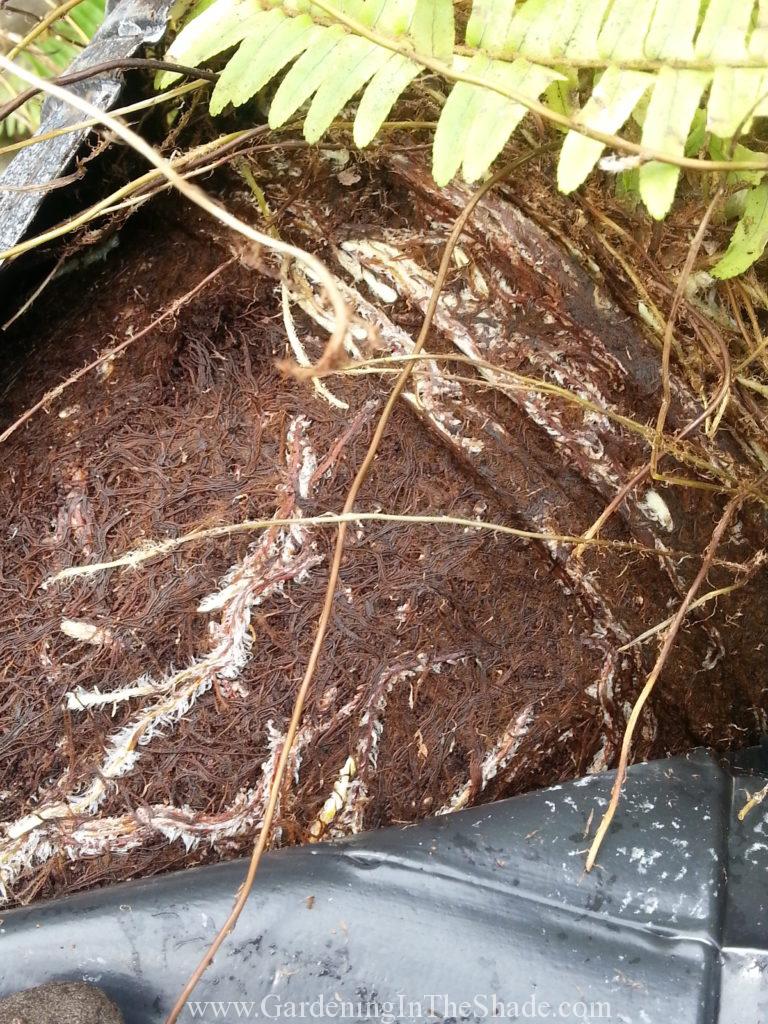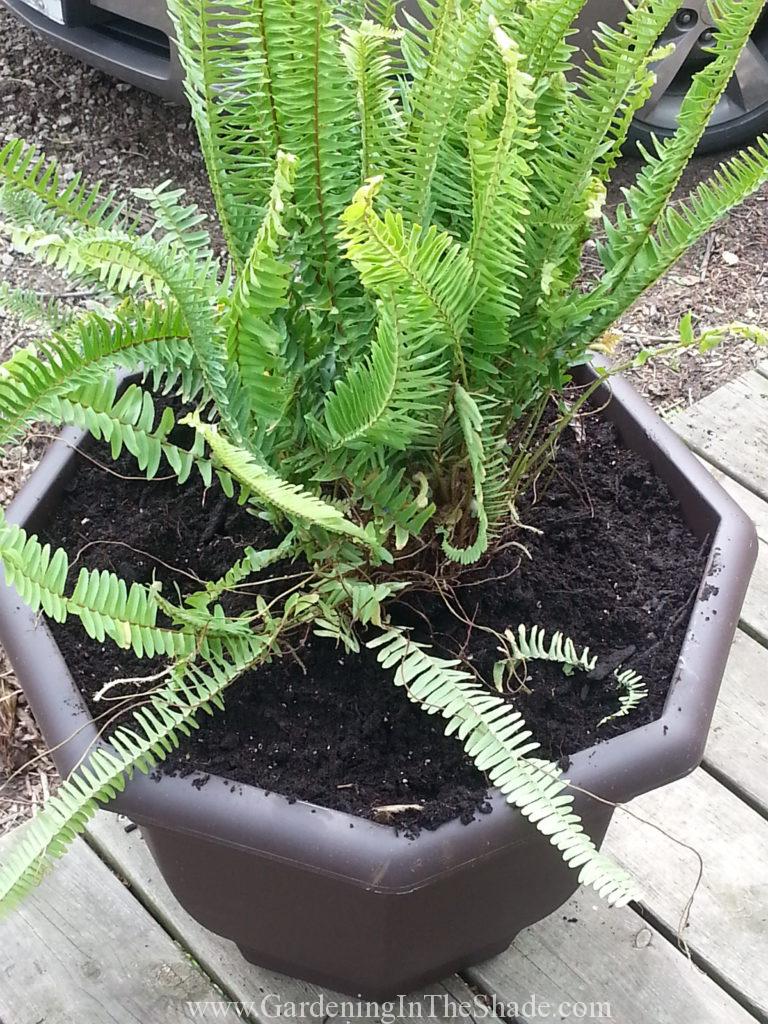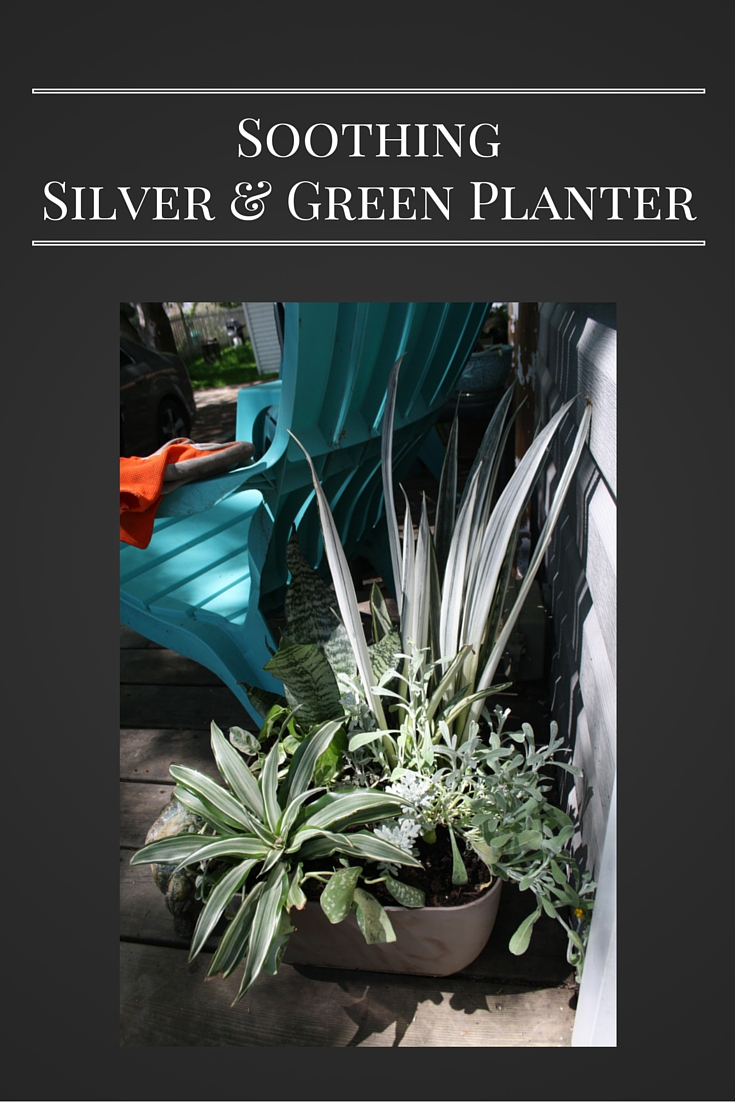
I broke every rule when I planted this soothing silver and green planter so I’m hoping it doesn’t wind up teaching me a lesson. The first broken rule is of course – I’ve mixed full sun plants in with shade plants. What really worries me though is that I completely forgot to think about the water needs of each plant.
Silver Green Planter – The Inspiration
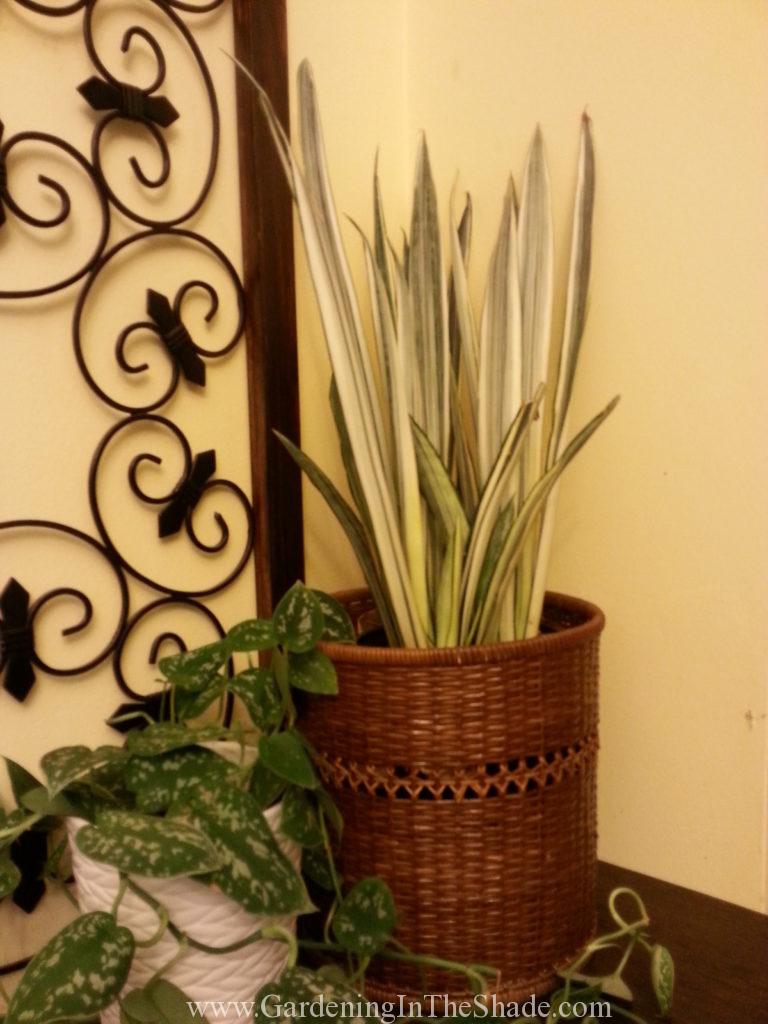
It all started with a gorgeous white and green snake plant I spotted at one of my local garden centers. I absolutely had to have it. I knew snake plants do well in low light, but I didn’t realize at the time how susceptible they are to over watering.
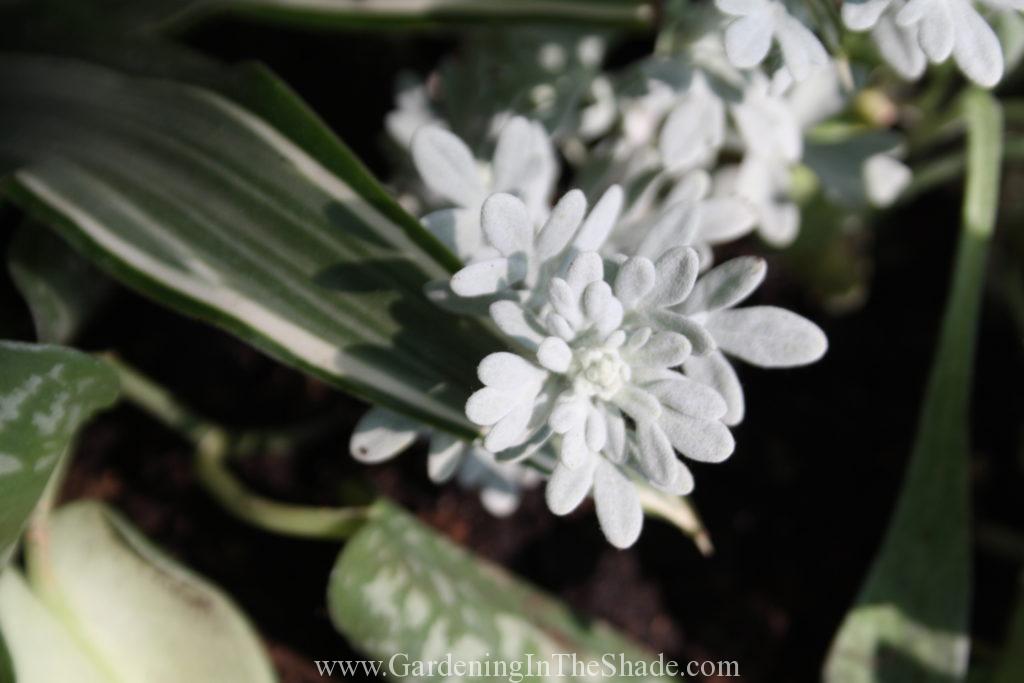
Then I added an Artemisia Silver Brocade, a full-sun perennial with pretty silver green, almost white foliage.
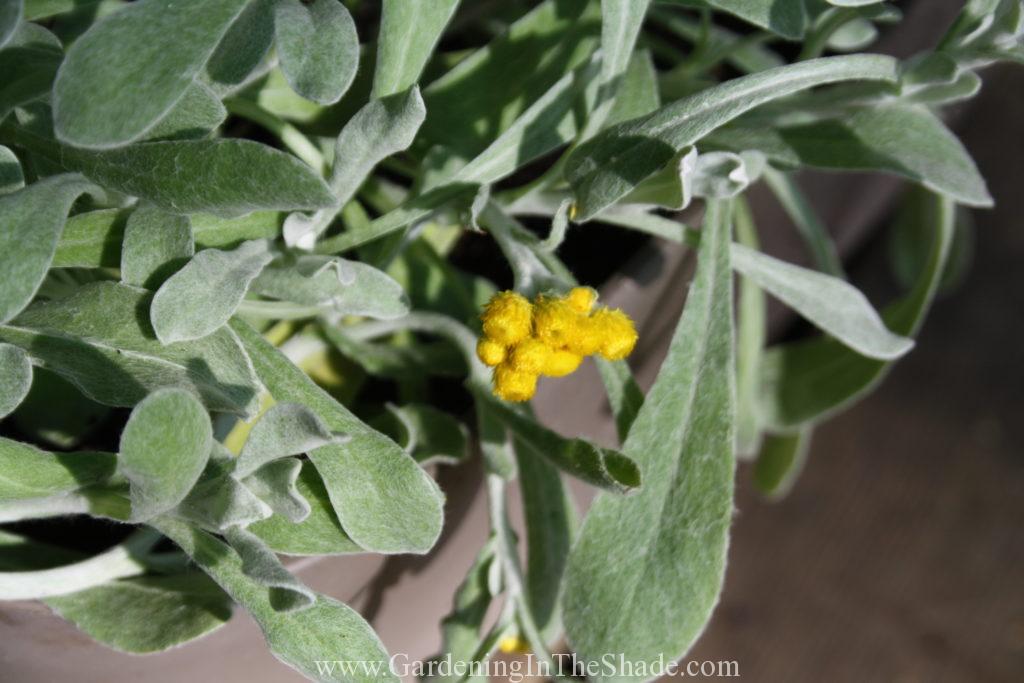
And just because I’ve never had one and I feel it is a sorely underappreciated plant, I threw in a PW Flambé chrysocephalum, an annual calling for…? You guessed it – full-sun. It’s also susceptible to crown & stem rot when grown in cool, damp conditions, say like a jam-packed planter? But it does have that silver green foliage along with the unusual bright yellow flowers.
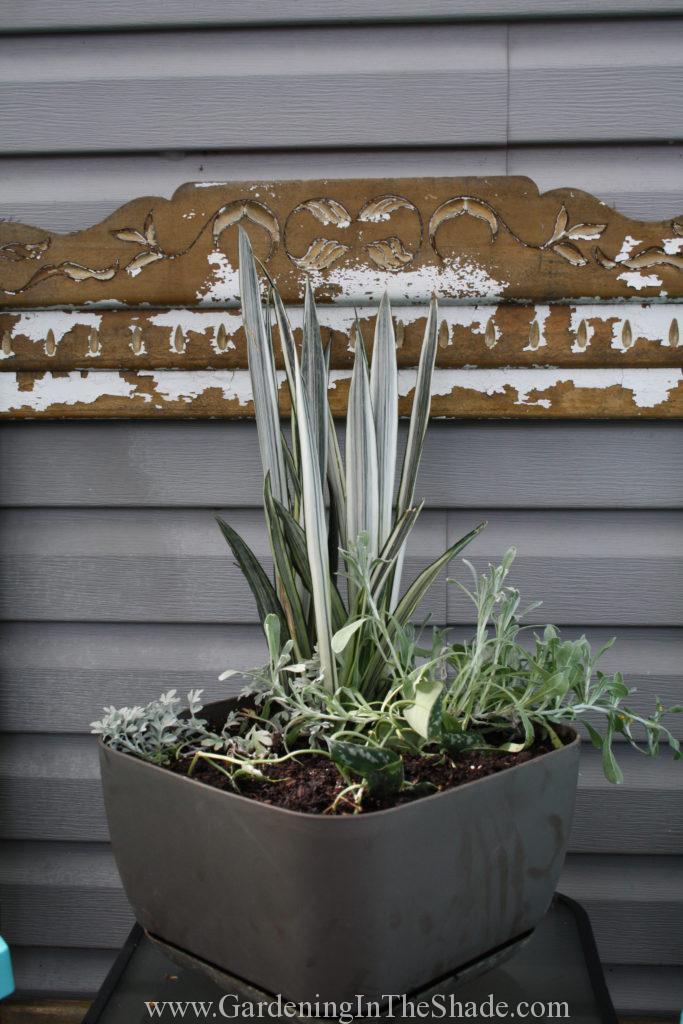
I added a silver and green variegated pothos slip to the mix and then threw it all into this square pot. Aside from the woeful lack of research I put into my plant choices, something else was missing. So I headed off to a local greenhouse that grows and sells tropical plants, and promptly purchased a bunch of 4″ plants I didn’t need, along with the ones I used to finish this planter.
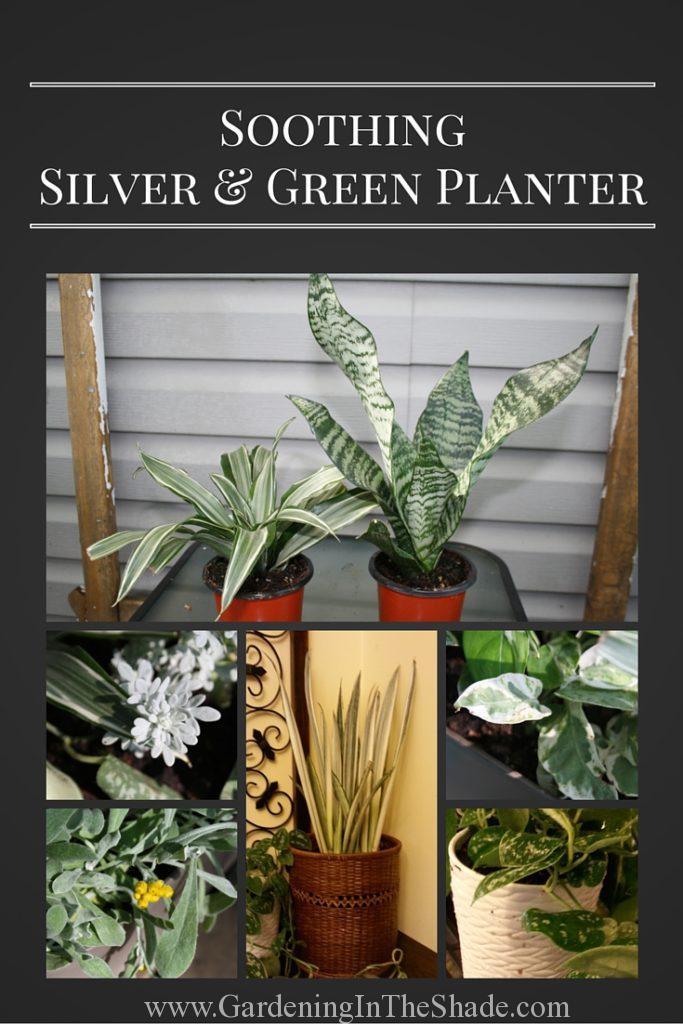
Silver Green Planter – The Plants:
A & B are both snake plants. The taller, vertically striped white and green one that started it all, and a second shorter one (to the right in the top photo above with silver and green horizontal variegation. If I manage to not drown the poor things over the summer, both will do well over-wintering indoors.
C is a Dracaena. Another tropical/houseplant that does well in my house. Shown to the left in the top photo above. It’s basically just a fancier relative of the spike that appears in just about every geranium planter ever seen.
D is the Artemisia Silver Brocade, a full-sun perennial, and E is the Flambé, a full-sun annual.
F & G are both varieties of pothos. F is a white (not cream or yellow) variety called Glacier while G is a silver and green variety sometimes called Satin Pothos.
Silver Green Planter – The Planting Diagram
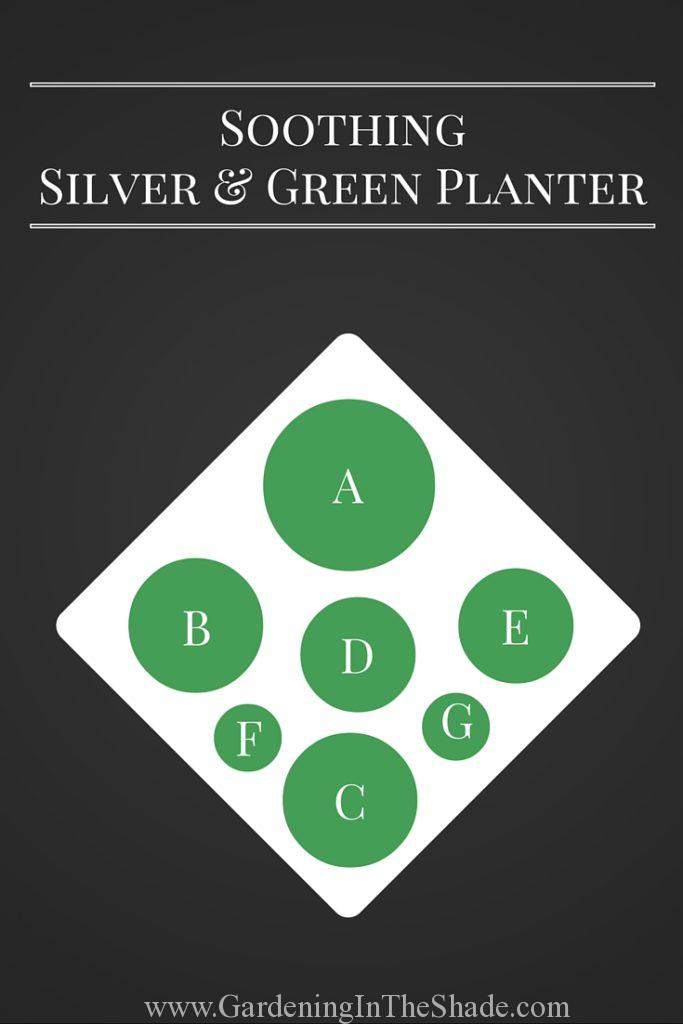
At the moment it’s a pretty planter, but it will be interesting to see how it does over the summer and what is still alive in the fall. I think the biggest concern will be making sure I don’t over-water this planter.
If you enjoyed this post, don’t forget to share it with your friends! For more just like it follow me on Pinterest, Facebook and Twitter or sign up for regular updates by email.
If you have ever thought about starting a garden or craft blog of your own see how easy it is >>here<<.

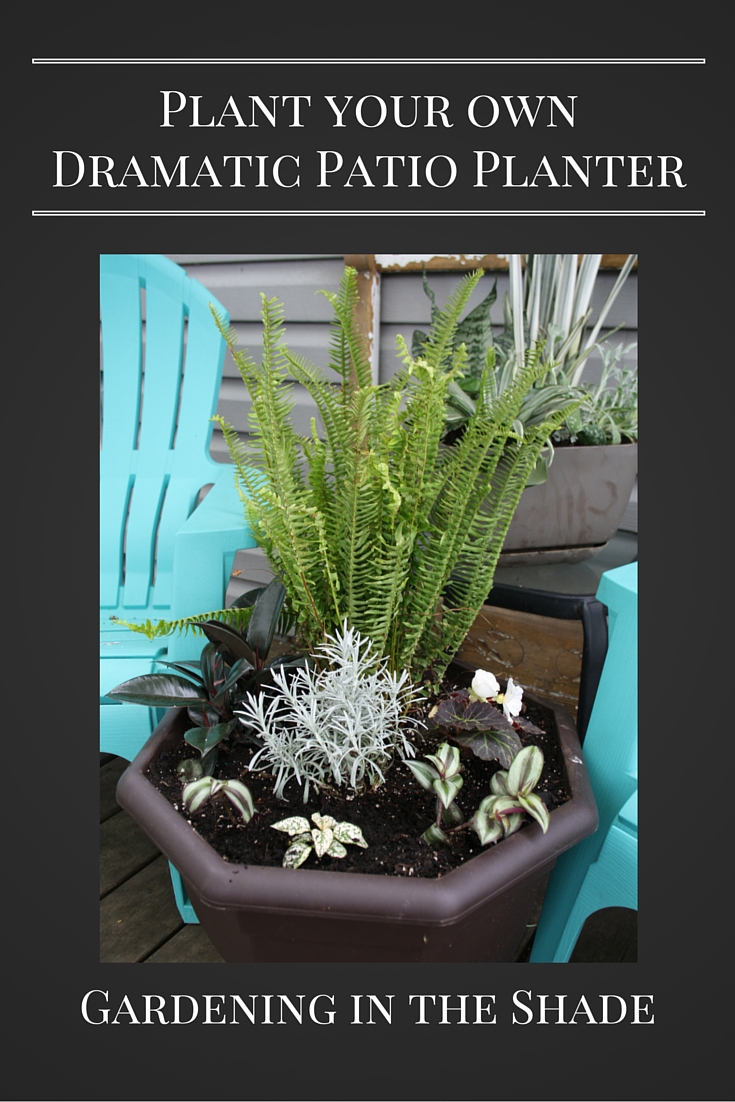
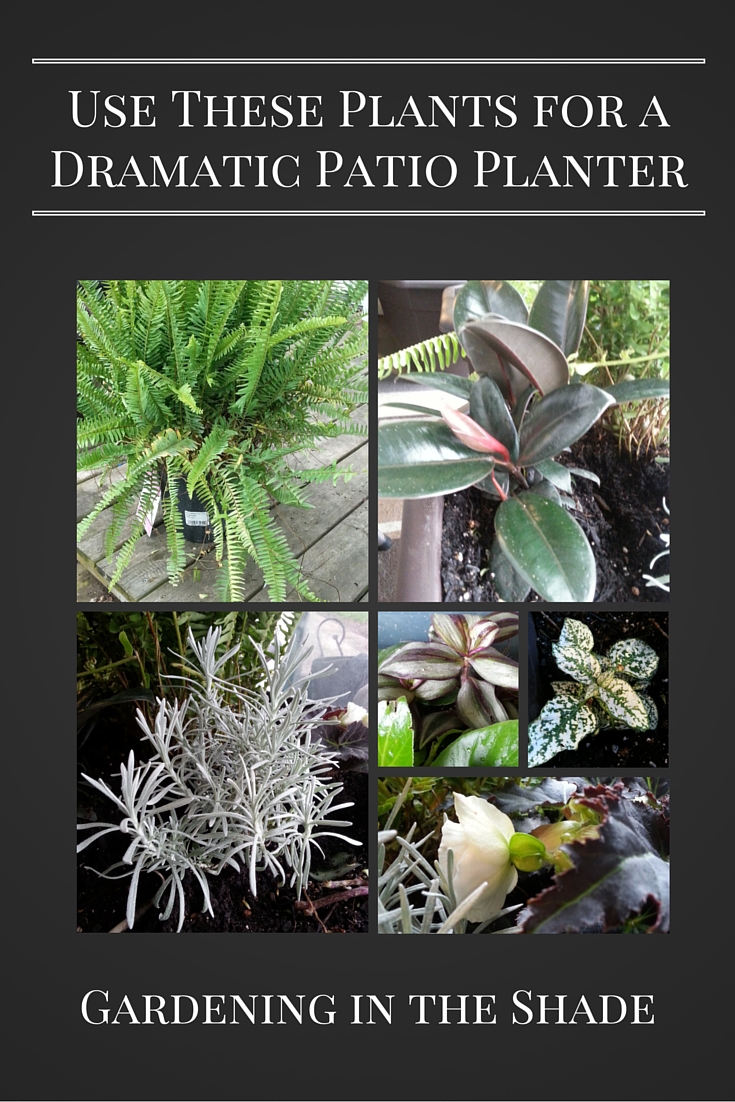
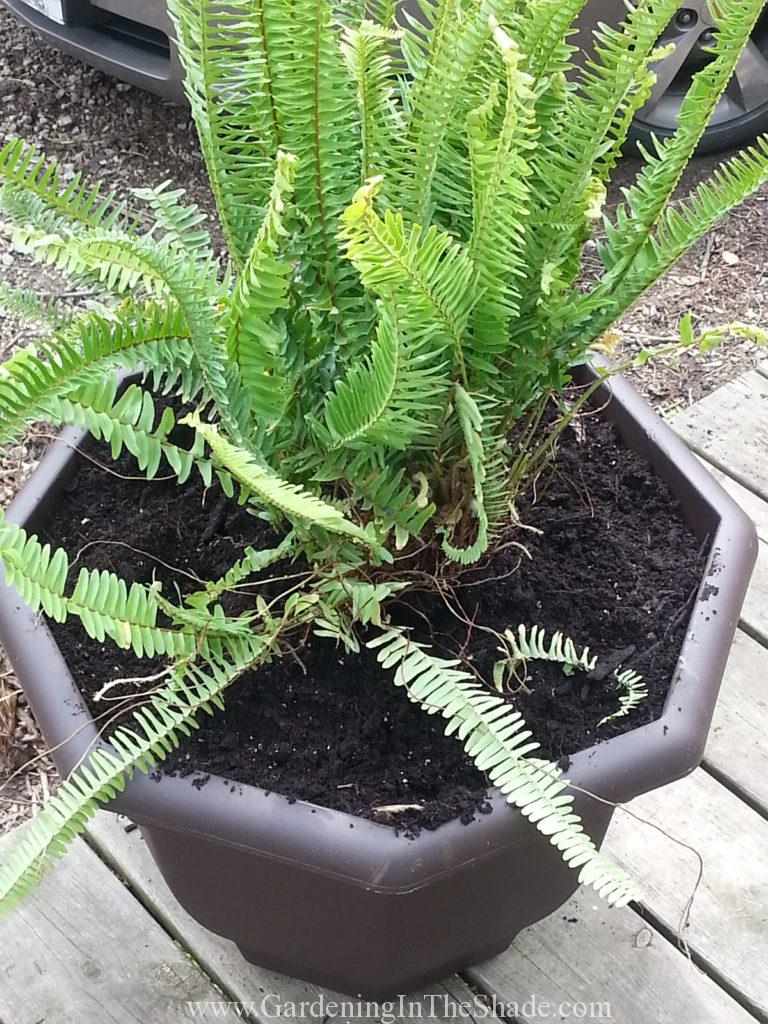
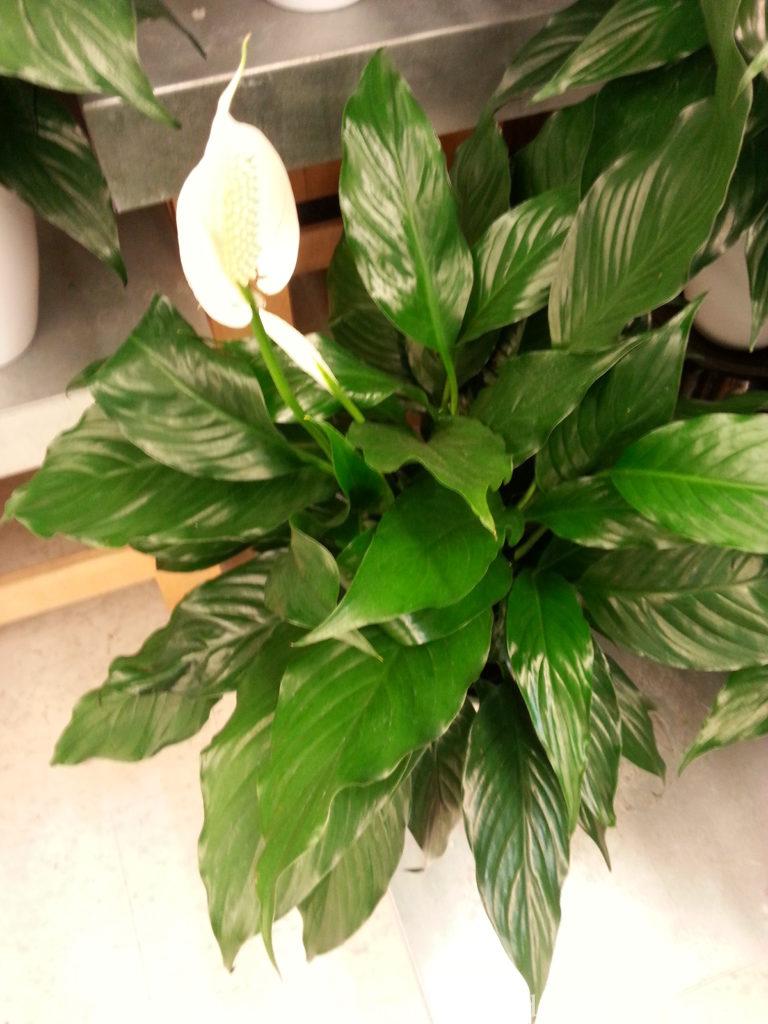 Or you could use a Peace Lily
Or you could use a Peace Lily